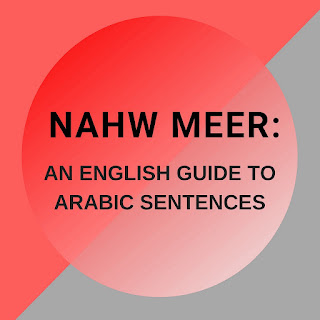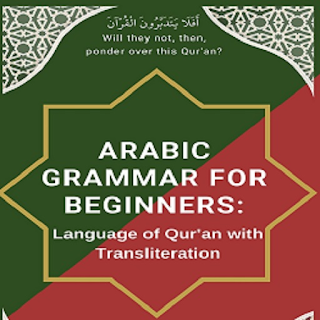9/12.1/12.2 - Triliteral Roots with Additional Alphabets
Section 12.1 - Triliteral Roots with Additional Alphabets اَبْوَابُ الثُّلَاثِيْ مَزِيْدٌ فِيْهِ ab-waa-but thu-laa-thi mazee-dun fee-hi
The forms discussed so far were did not have any additional alphabets. Specifically, we have discussed forms with three alphabet roots which are called bare trilateral roots الأَوْزَاْنُ الثُلَاثِيُّ الْمُجَرَّدَةُ al-aw-zaan-ul mu-jarra-da-tuth thu-laa-thi. They were composed solely of the three root alphabets plus short vowels, which do not count as alphabets. But in Arabic, to convey the meaning more precisely, alphabets are added to trilateral roots. Forms with additional alphabets are called augmented forms الأَوْزَاْنُ الْمَزِيْدَةُ al ma-zeeda-tul aw-zaa-nu.
Note that there are many trilateral roots which are not used in past or imperfect sense by themselves but are used only with additional alphabets from any of the forms described below. Obviously, this requires knowledge of the language and which roots are used for various augmented forms. Our teacher for this would be Al-Qur’an and reading more advanced books and grammar.
We will be describing these forms with additional alphabets and the purpose they serve and their past and imperfect tenses in the following section. Note that:
- It is not necessary for every root to be used in every form. Some roots are used only in one form but not in any other form. Some roots are used in several forms but not in all forms, and so on.
- It is not possible to use a root in a certain form if you were not sure that the root is customarily used in that form; and if you know that it is used, you should find out first what the customary meaning of the Verb is. You should not count on your previous knowledge of the general meaning of the form, because the Verbs actual meaning can be quite different.
Section 12.2 - Explanation of مَزِيْدٌ فِيْهِ Mazeed Fihi Forms:
Trilateral Forms الثُلَاثِيُّ الْمُجَرَّدَةُ:
In the previous sections for the Verb, we had learned that most of the Verbs are based on a three alphabet (trilateral) root word and we had classified these into six forms. These are listed here in the order of past tense maa-di مَاضِيْ/ imperfect tense مُضَارِعٌ mu-daa-ri-un/source مَصْدَرٌ mas-da-run.
These 6 variations are considered to be part of Form I.
Form ف: فَتَحَ/يَفْتَحُ/فَتْحًا fa-ta-ha/yaf-ta-hu/fat-han meaning he opened/he opens or will open/to open
Form ض:ضَرَبَ/يَضْرِبُ/ضَرْبًا da-ra-ba/yad-ri-bu/dar-ban meaning he hit/he hits or will hit/to hit
Form ن: نَصَرَ/يَنْصُرُ/نَصْرًا na-sa-ra/yan-su-tu/nas-ran meaning he helped/he helps or will help/to help
Form س:سَمِعَ/يَسْمَعُ/سَمْعًا sami-aa/yas-ma-u/sam-an meaning he listened/he listens or will listen/to listen
Form ح:حَسِبَ/يَحسَبُ/حَسْبًا ha-si-ba/yah-sa-bu/has-ban meaning he presumed/he presumes or will presume/to presume
Form ك:كَرُمَ/يَكْرُمُ/كَرْمًا ka-ru-ma/yak-ru-moo/kar-man meaning he was kind/ he is or will be kind/to be kind
Augmented Forms مَزِيْدٌ فِيْهِ Mazee-dun Fihi:
With addition of alphabets (1, 2 or 3) there could be many augmented forms. But as before, we will be covering most commonly used ones and these are eight of them. These forms are named after the مَصدَرٌ Mas-da-run (Source) of the Verb as will become clear from description below. We will be covering these in the order of 1, 2 or 3 additional alphabets:
Form II. فَعَّلَ/ يُفَعِّلُ/ تَفْعِيْلًا fa’ala/yuf-fa-i-lu/taf-ee-lan (1 extra alphabet ع). Benefit of this form is to do something gradually and making a transitive verb an intransitive.
Form III. فَاعَلَ/ يُفَاعِلُ/ مُفَاعَلًا faa-a-la /yu-faa-i-lu/mu-faa-al-an (1 extra alphabet اْ). Benefit of this form is doing something with more than one actor and being competitive.
Form IV. أَفْعَلَ/ يُفْعِلُ/ إِفْعَالًا af-ala/yuf-i-lu/if-aa-lan (1 extra alphabet أَ). Benefit of this form is to do something in one step and making a transitive verb an intransitive.
Form V. تَفَعَّلَ/ يَتَفَعَّلُ/ تَفَعُّلًا tafa’-ala/yata-fa’-ala/tafa-u-lan (2 extra alphabets ت and ع). Benefit of this form is doing something with extra effort.
Form VI. تَفَاعَلَ/ يَتَفَاعَلُ/ تَفَاعُلاً ta-faa-a-la/yata-faa-alu/ta-faa-u-lan (2 extra alphabets ت and اْ). Benefit of this form is doing something together with others.
Form VII. اِفْتَعَلَ/ يَفْتَعِلُ/ اِفْتِعَالًا if-ta-ala yaf-ta-i-lu/if-ti-aa-lan (2 extra alphabets اِ and تَ). Benefit of this form is doing something with extra preparation.
Form VIII. اِنْفَعَلَ/ يَنْفَعِلُ/ اِنْفِعَالًا in-fa-a-la/yan-fa-i-lu/in-f-aa-lan (2 extra alphabets اِ and نْ). Benefit of this form is making an intransitive verb a transitive.
Form X. اِسْتَفْعَلَ/ يَسْتَفْعِلُ/ اِسْتِفْعَالًا is-taf-a-la/yas-taf-i-lu/is-tif-aa-lan (3 extra alphabets اِ , سْ and تَ). Benefit of this form is doing requesting for something.
Form IX إِفْعَلَّ is skipped here since it is not used much in Al-Qur'an.
Details for these forms follow in the next chapter.
***





Comments